
Among the many joys of birding, the arrival of winter visitors is an ongoing thrill. With September looming, birders and nature lovers will be looking forward to the arrivals of White- and Golden-crowned Sparrows as well as the distinctive “little birds with the hoods.” Here, Jim Gain gives us his usual spectacular images and the proper name of our distinctive winter visitors, those, “little birds with the hoods.” They should start arriving in mid-September, though arrival dates can vary.
The Dark-eyed Junco is a Common Winter Visitor to California’s Central Valley and can be found in many habitats. There are 2 species of Junco in the US, the Dark-eyed Junco and the Yellow-eyed Junco. However, the Yellow-eyed Junco is only found in SE Arizona and is not going to be found in the Central Valley.
The Dark-eyed Junco is a small, sparrow-sized bird that is in fact, a member of the sparrow family (Passerellidae). Juncos are granivorous (seed-eating) ground-dwelling birds that are almost always found in small flocks.
While it is often found in close proximity to White-crowned and Golden-crowned Sparrows at backyard feeders, it is actually more closely related to the more secretive Fox Sparrow.
Dark-eyed Juncos by Jim Gain
Dark-eyed Juncos are known as habitat generalists. In the field of ecology, classifying a species as a generalist or a specialist is a way to identify what kinds of food and habitat resources it relies on to survive. Generalists can eat a variety of foods and thrive in a range of habitats. Specialists, on the other hand, have a limited diet and stricter habitat requirements. (National Geographic Resource Library)
Appearance
While there are several different forms (sub-species) of Dark-eyed Junco in the US, the form known as the Oregon Dark-eyed Junco is our most common form. The adult male “Oregon” Dark-eyed Junco is easily identified by its all-dark head and brown back, pale bill, white belly and white outer-tail feathers. The white outer tail feathers flash distinctively in flight and while hopping on the ground.
The female and 1st year male “Oregon” Dark-eyed Juncos sport a more medium to light gray head, but otherwise look the same.
Other Juncos
Some of the other forms (sub-species) of Dark-eyed Junco that may appear from time-to-time in the Central Valley include the curious all gray with a white belly Slate-colored Junco or the reddish-backed Gray-headed Junco. In SE Arizona there is a completely different species called the Yellow-eyed Junco that looks like a Gray-headed, but with yellow eyes.
See more of Jim’s fine images and writing here.

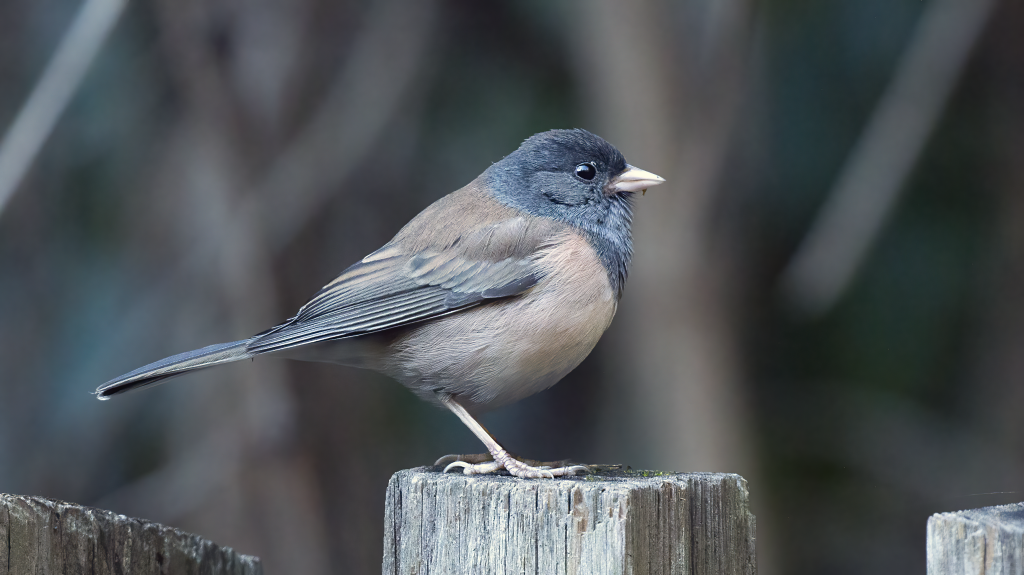
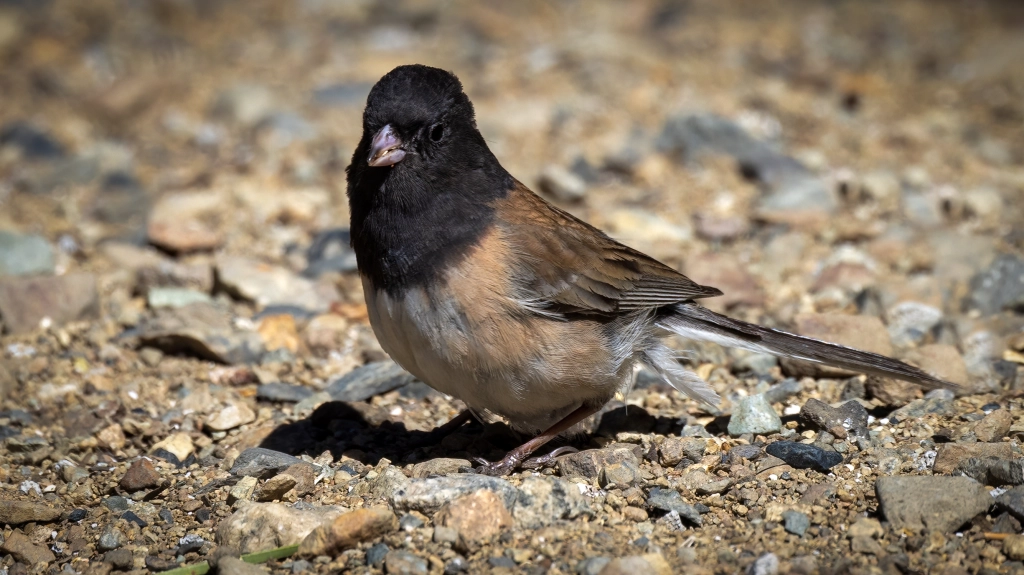
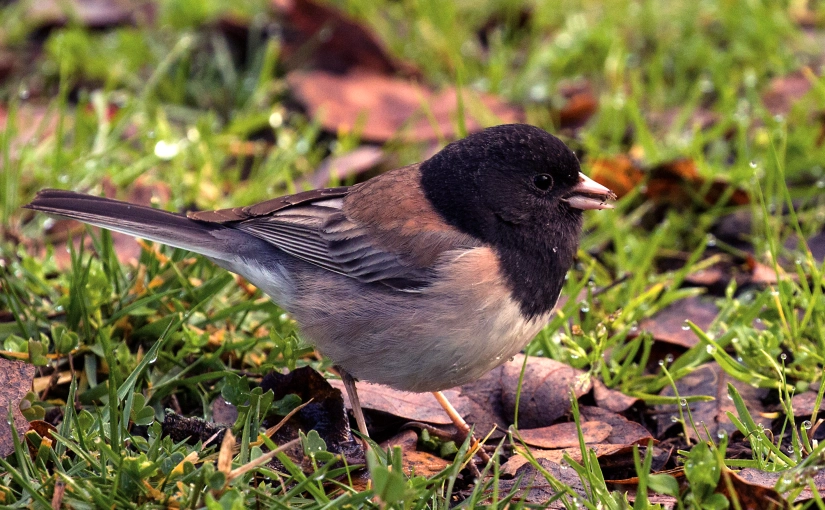
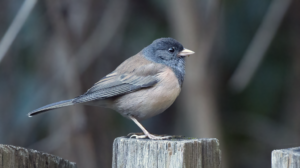
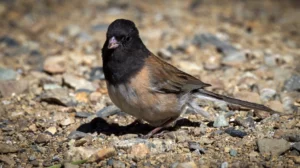
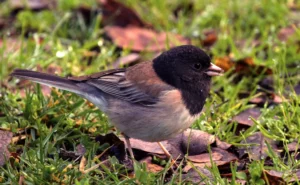

Birds look different in different seasons and it becomes very confusing to id them especially the migrating ones coming and going. I need a ,”summer” bird, “winter” bird pic book
Leilani: There are lots of bird books. Sibley’s and National Geographic have been popular and you can also access seasonal differences online. Sometimes it’s confusing, but learning to focus on subtle characteristics is good training for the eyes and mind, when it doesn’t drive you crazy. Sometimes it drives you crazy.
Yes and they also can look very different depending on their level of maturity, It took me a while to connect the juvenile and the adult black crowned night heron.